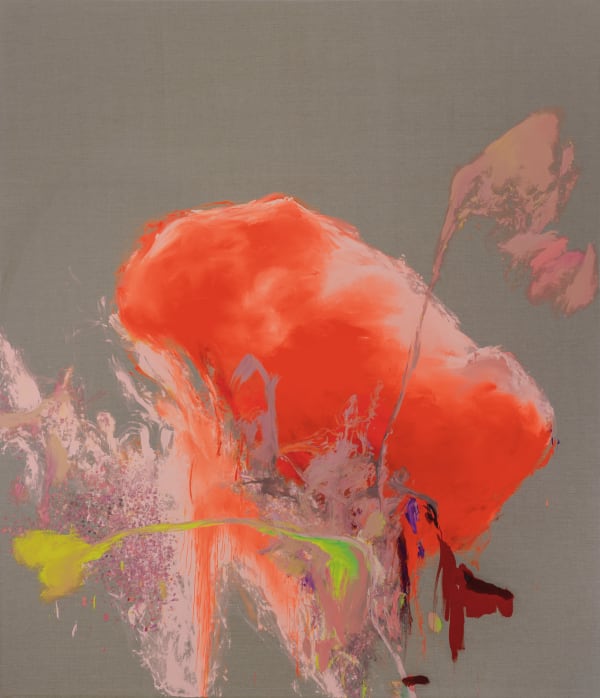After the first part of his solo presentation at Galerie Thomas Schulte this autumn, which opened as part of Gallery Weekend Berlin 2020, Michael Müller approaches his own work as curator in the second iteration of his exhibition. With the title Ästhetisches Urteil und Selbstlosigkeit: sich einer Sache aussetzen mit entleertem Blick und ohne Halt (Aesthetic Judgement and Selflessness: exposing oneself to something with an empty gaze and without holding back) the artist takes the theme of abstraction one step further. By staging a second version of the exhibition, the curator Michael Müller distances himself from Michael Müller as painter and, thus, also from his own self-commissioned works. Furthermore, a second exhibition opens up the possibility of self-correction; different versions and points of view create a situation of comparison. Herein aesthetic decisions can be found to be right or wrong and an aesthetic judgment can be made.
The most noticeable aspect to set the second hanging from the first is its reduced, concentrated form. Nearly all elements of installation have been removed from the exhibition and the paintings are each given their own space on the walls. The large abstract paintings, for example, Mentale Treibhölzer (Mental Driftwood) had originally been fitted into the window frames of the Corner Space to function as paintings for the urban space. Now presented in a classic hanging inside the gallery, they have been freed from their subjugation as parts of the site-specific installation, and—released from their synthesis with the architecture—have been strengthened in their autonomy.
Müller approaches the second major theme of the exhibition, selflessness, by installing a physical threshold in the exhibition space. Müller sees the crossing of a threshold as inherent in the creative act. Thus, Müller describes as part of the creative process the build-up of an inner pressure—nourished by aesthetic considerations of form and color as well as an emotional blending of fear and lust—that accumulates and finally finds its release on the canvas.
The first action—the first brushstroke—marks the crossing of a threshold and requires planning, determination, and sense of purpose. Thinking of the artist as the driving force and engine of the creative process, the painter soon, however, encounters a paradox when confronted with the question of when a painting is finished. The answer often only becomes evident in the transgression, when a further brushstroke becomes too much. Therefore, only the painting itself seems to be able to assert its own perfection.
The title of the large-format diptych in the Window Space, No. 3 & 4, The shoulder on which to bear time (2019/20), is indicative of Müller‘s understanding of the role of the artist in the painterly process. According to Müller, a picture goes through various life phases such as childhood, youth, and maturity. The painter is responsible for the temporal duration of these stages of a painting, but is relieved of this responsibility once the painting is complete. Although painting begins with the pictorial idea and inner desire of the artist, the picture is only finished once it has become alien to them; once it is no longer their picture, but has become the picture. This selflessness also gives the painting its potency for the future: since every future beholder will see the painting differently, subjectively, with different expectations and differing levels of prior knowledge, by being seen the picture will be produced anew, again and again.











